Are you considering upgrading your curb appeal, but don’t want to spend a fortune on it? We have some front yard white rock landscaping ideas for a total makeover of your house’s outdoor area. If you have an area in your garden where you need to create different textures, zone, or borders then white rocks would be an excellent option as their pure white color will make a stylish and tidy outdoor space.

- Are white rocks good for landscaping?
White rock is a popular choice for different types of garden designs. You can use it for Zen gardens, rock gardens, or even flower gardens.
White rock can be used as the primary ground covering or as an accent to preexisting mulches, rocks, or grasses.
- How do I put white rocks around my house?
You can create accent areas, river rocks or garden beds. You can also surround garden pathways or pavers with a layer of white rocks.
- Does white landscaping rock get dirty?
Bright white landscaping rocks look attractive in walkways, borders and in different garden areas, especially when they are brand new or just laid down, but the appearance goes downhill when the rocks get dingy and dirty.
The easiest option to clean them is to pick the rocks up and then rinse or wash them depending on how dirty they are.
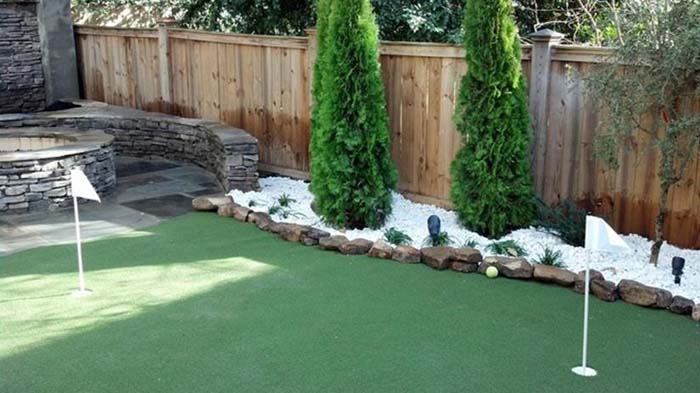
The manicured game area is bound by large rocks. White marble rocks keep any balls from getting dirty if they happen to go out of bounds.
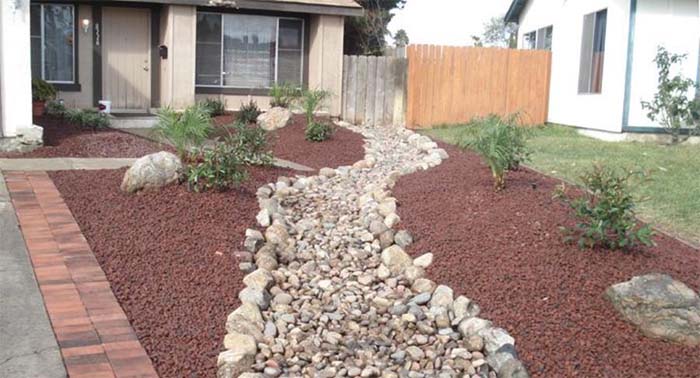
Another example of xeriscaping. River rocks set a path through rust-colored pebbles.
It’s a softer look than concrete and a solution to any rain runoff.
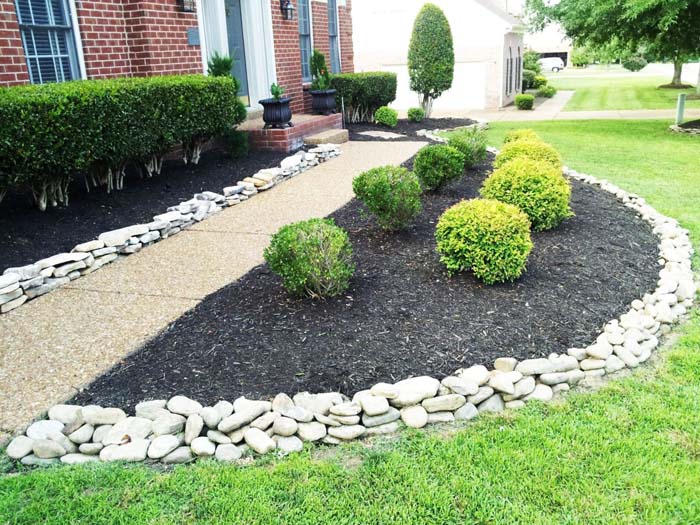
The green hedges in this yard are surrounded by dark mulch. Recreate this look with mulch or lava rocks.
Each section is then framed by larger white river rocks. It’s a dramatic, formal statement that works well with the red brick Georgian-style home.
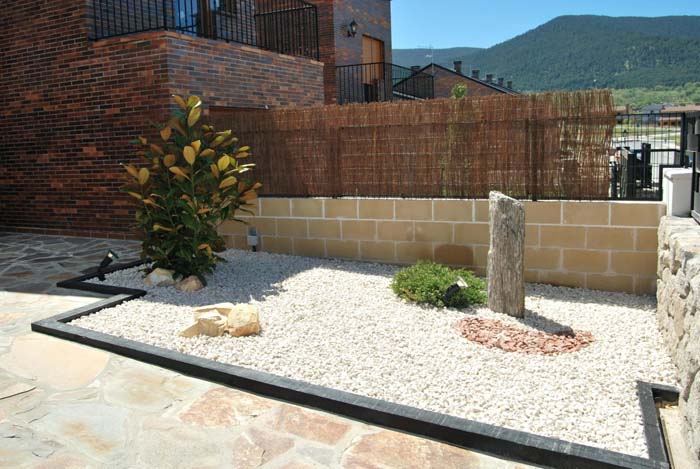
The end of this yard has a severe slope ending at a rock wall. This makes it difficult to decorate. Adding plants in the corner would create a water retention issue.
This undermines the base of the wall. The owners created an area to feature elements found locally. It creates interest with its play on shadows and light.
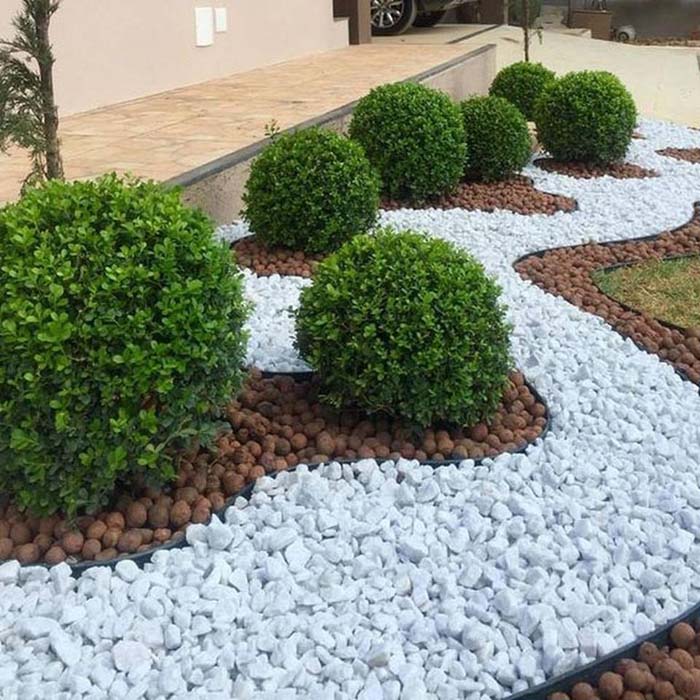
A white marble chip path winds through the bushes alongside the home.
This makes the smooth, round aggregate surrounding the shrubs more prominent.
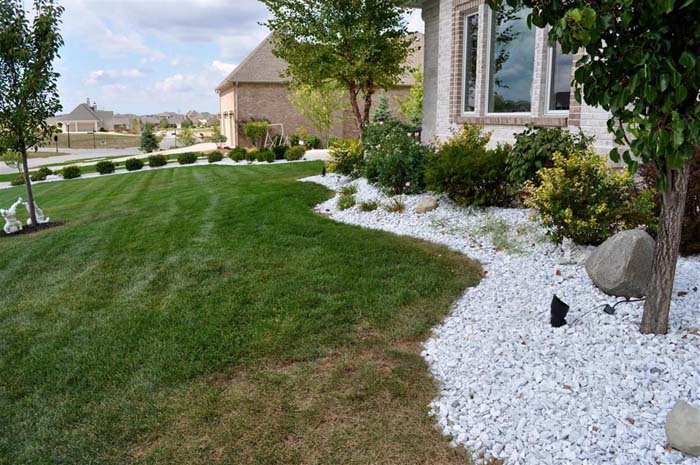
Smaller plantings disappear in black topsoil. Adding white marble chips helps show how the plants are grouped to follow the contour of the garden.
Larger boulders balance the weight of the bushes with the empty space around the tree. They also help hide the spotlight’s electrical cord.

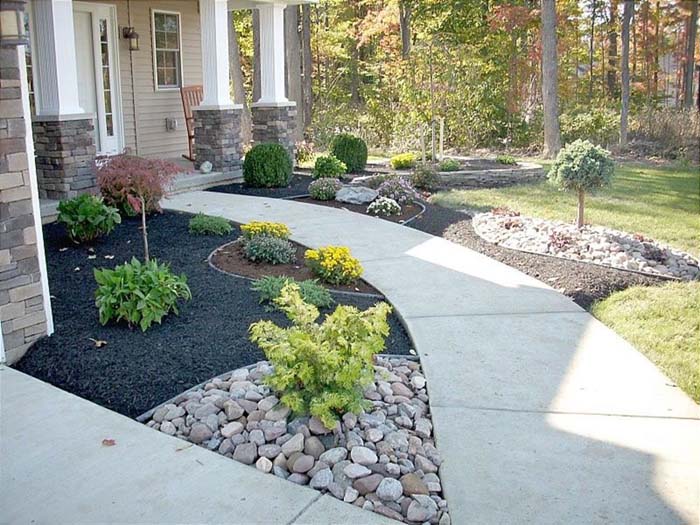
Use rocks of various shapes and sizes to define garden spaces.
This yard has very few plants. By using rocks, the garden looks large.

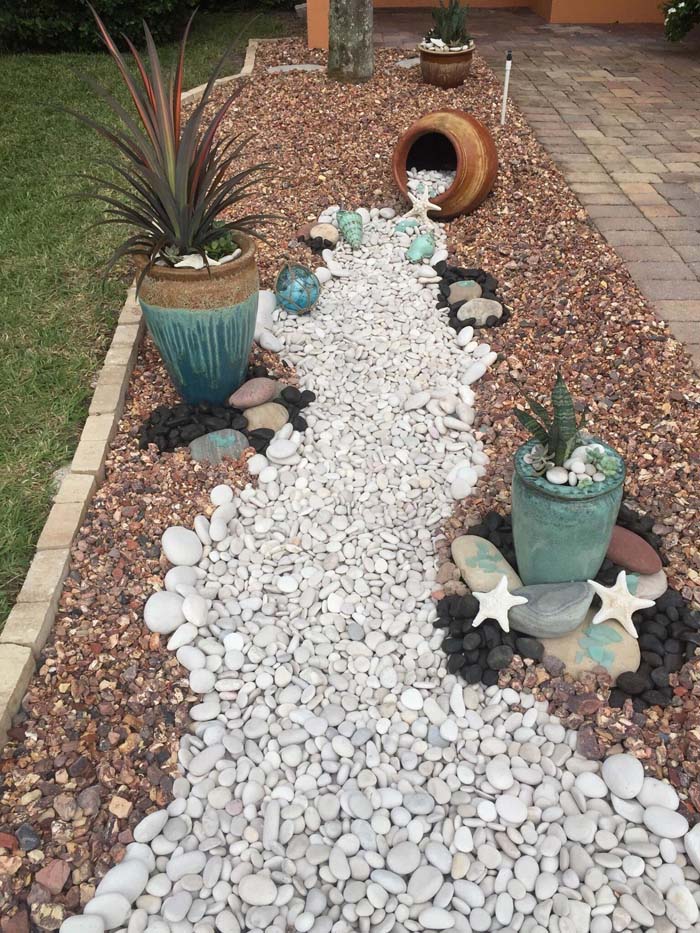
Simple brown pebbles next to a red brick walkway look dull and uninspired. This section was given a visual boost with white river rocks and plants.
The plants are in cement pots, surrounded by black lava rocks and topped with smooth painted stones. Lawn ornaments add whimsy. By using cement pots, the plants can be changed out in a few minutes.
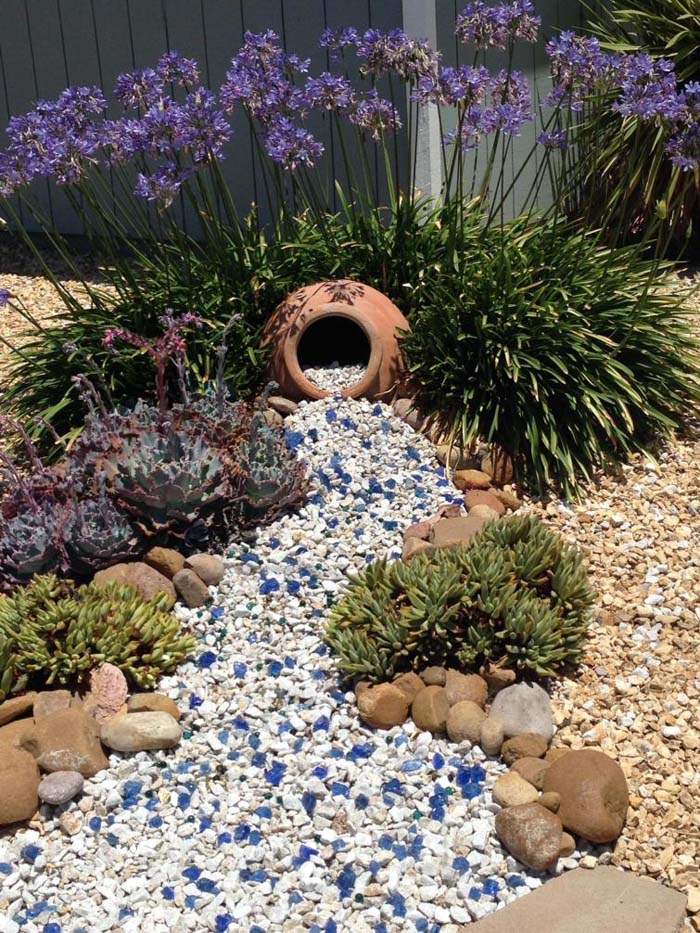
Create a feature in any yard with this idea. A large terracotta pot, succulents, and large river rocks set the stage.
White rocks are mixed with other aggregates. Dots of blue pebbles complete the scene.
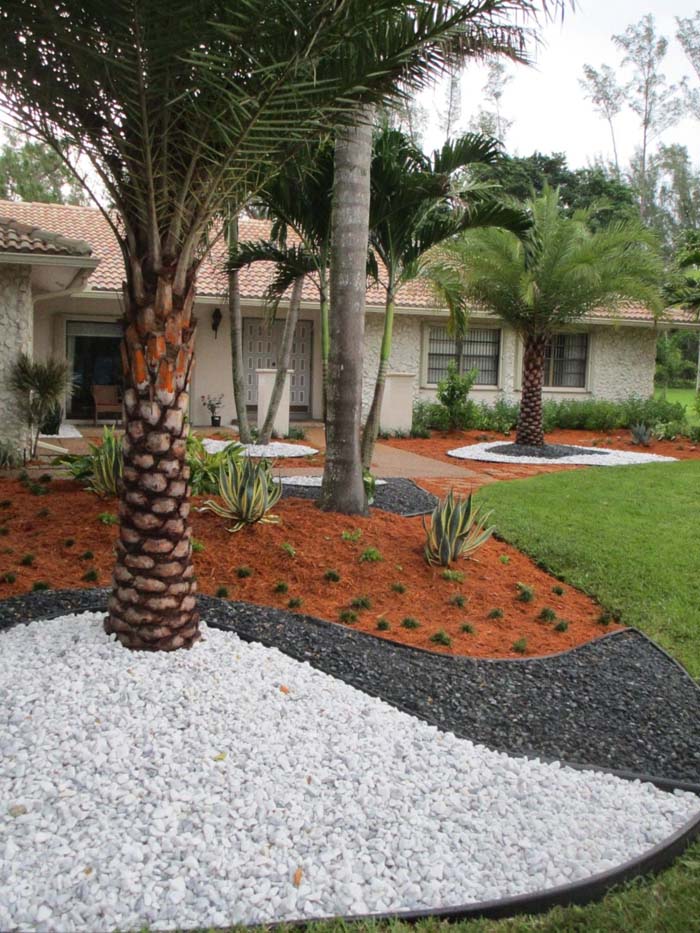
White marble chips, lava rocks and reddish-brown mulch opened a world of creativity for this yard. The homeowner created flowing spaces that are symbolic of the Yin-Yang balance.
Changing the pattern around the trees unifies the area. The system can be modified to suit the growth of the trees. The variegated color of the snake plants creates even more interest.
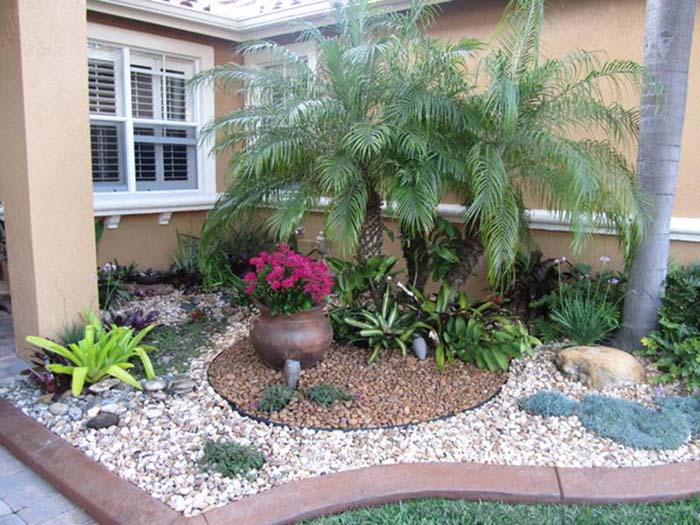
A small garden bed appears to float in the middle of a larger area with small plants and groundcover.
The bright marble chips are tempered by mixing them with brown pebbles.
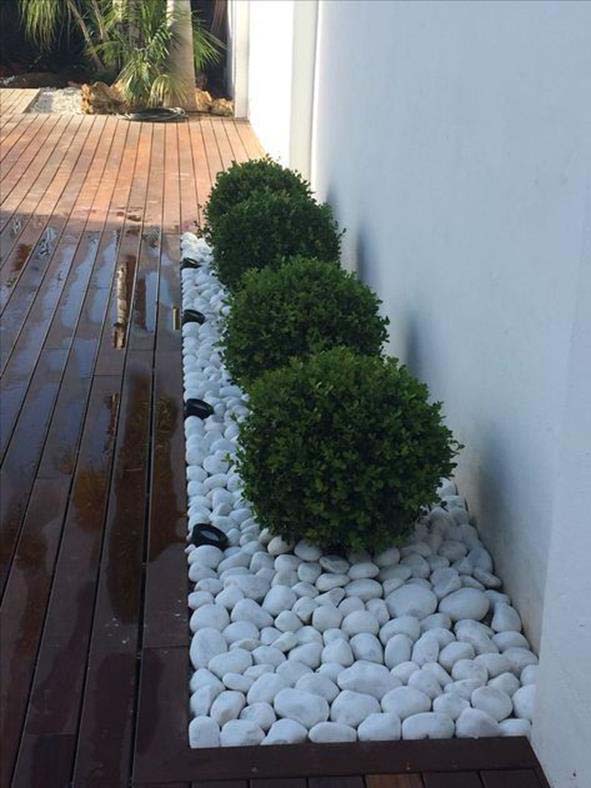
The green hedges would be lost against the dark stain of the patio. Large river rocks allow the hedges to stand out.
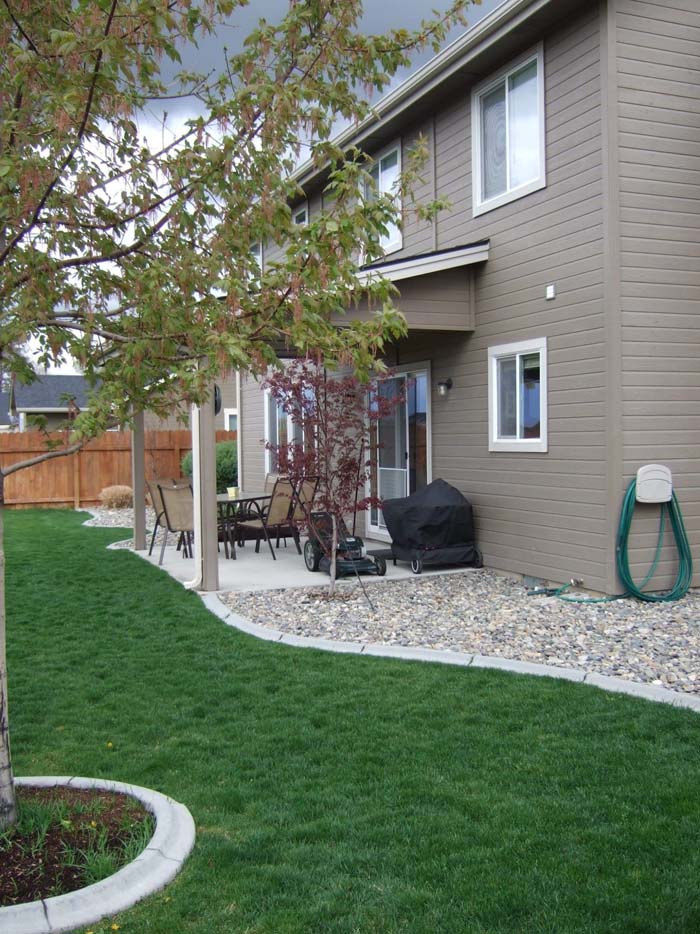
By itself, the small patio looks cramped. Adding white and river rocks extends the area. This also keeps the area near the home’s foundation looking neat and clean.
Gravel around the garden hose is a great solution for preventing a water-logged, muddy section of grass.
The homeowners would save time weeding around the tree if they would add rocks there, too.
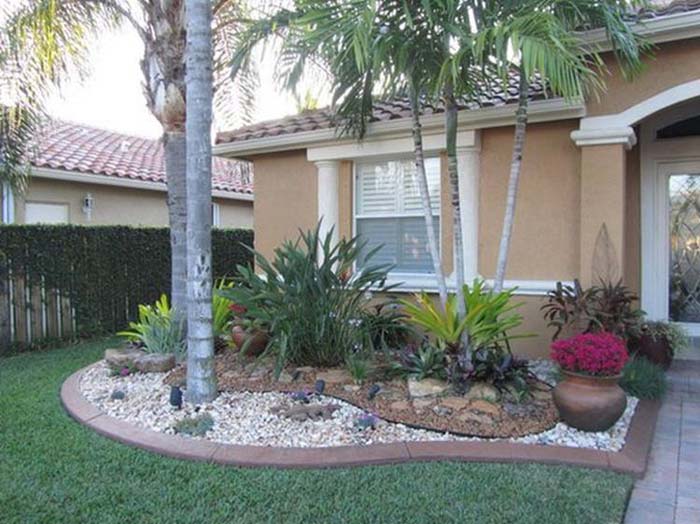
The original garden bed looked fine on its own. The problem came as it became more difficult to mow the grass around the tree in front.
The garden bed was redefined by adding brick pavers around the tree and bringing it to the walkway.
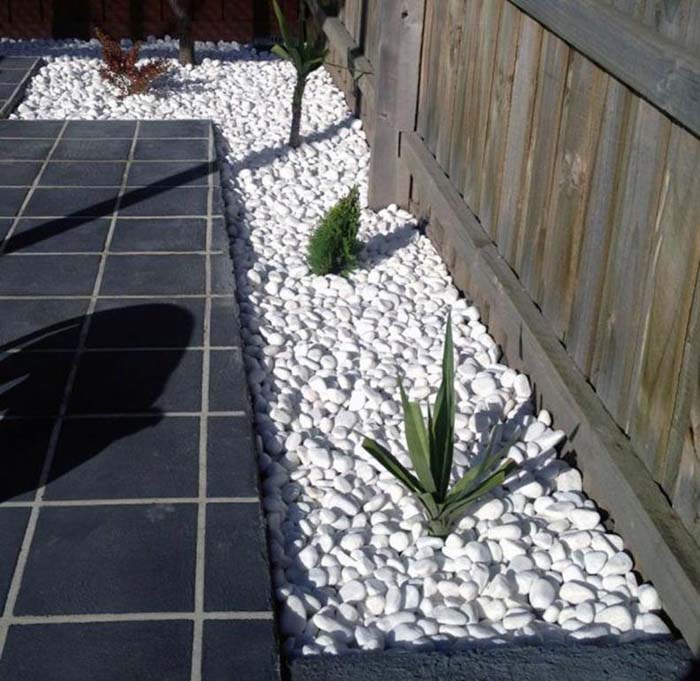
Whether it’s a bench idea that didn’t work out or a plant that had to be removed, large river rocks can be used as a quick fix.
For whatever reason, the tile on this patio ends abruptly. The rocks come to the rescue by filling in dead space and showing off a few nice plants.
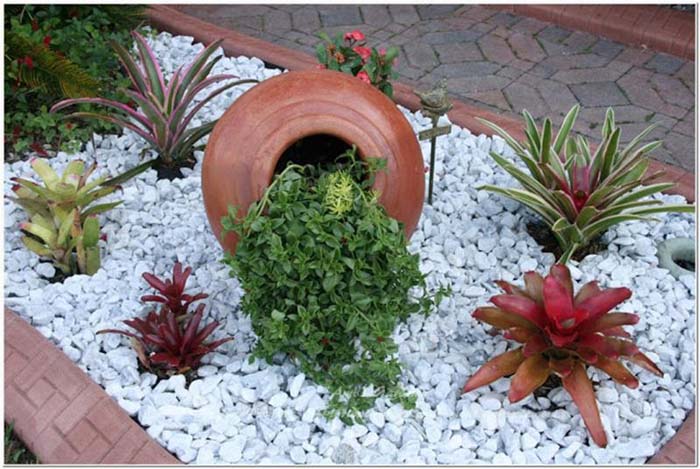
These succulents thrive in sandy soil. To keep the sand from spreading all over the walkway, marble chips are packed on top.
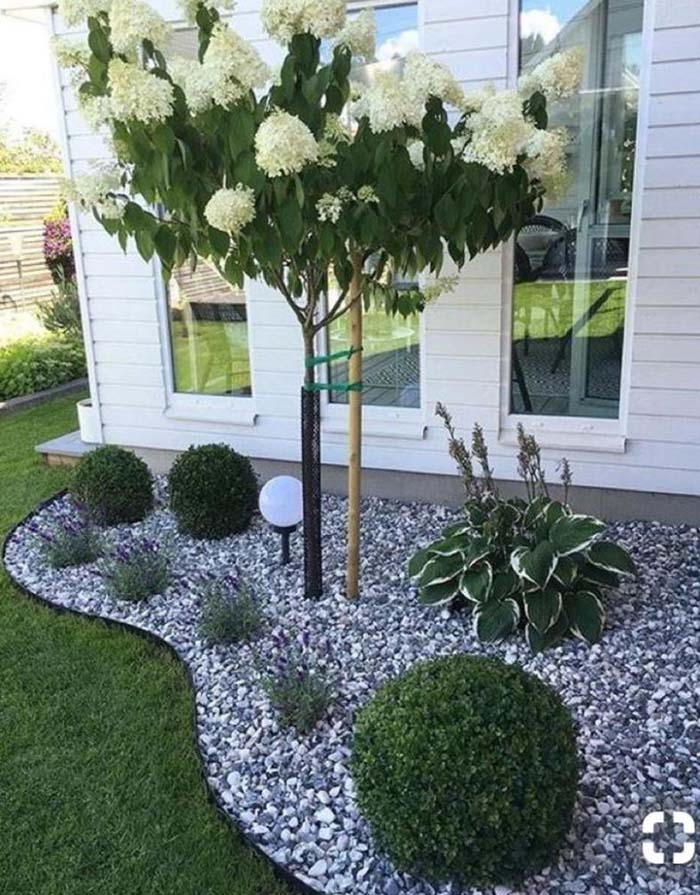
Because of the way our brains process light and color, you can change the brightness of any garden bed by adding or subtracting marble chips.
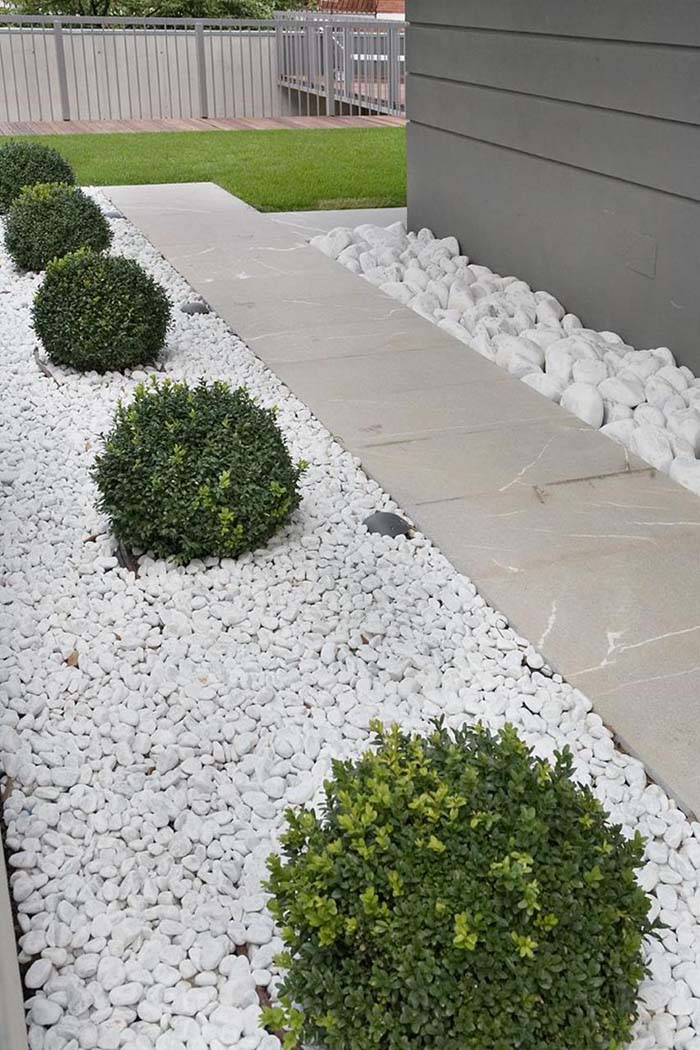
This home makes use of two sizes of white rocks. Large rocks near the house deter pests from burrowing.
They also provide a reflective surface for the walk lights. Medium size rocks won’t overwhelm the shrubs.
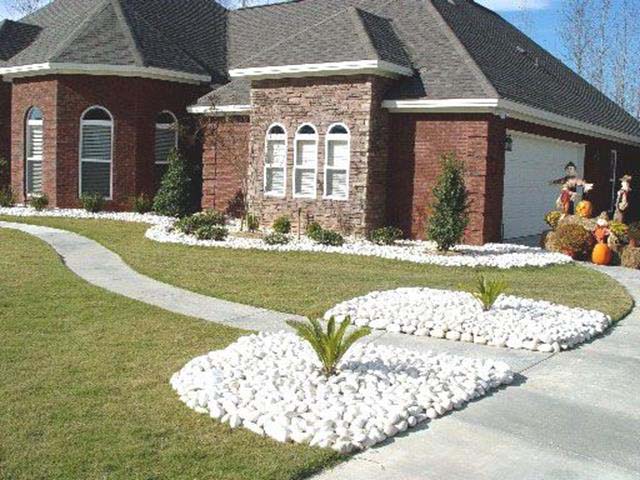
White river rocks are used in place of mulch throughout the yard.
It creates interest while protecting the roots of young plants from predators.
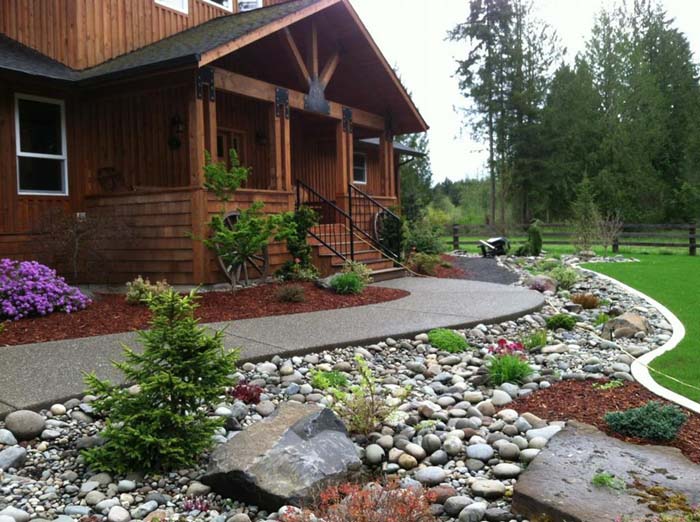
The river rocks along the sidewalk create a strong visual balance against this home’s entry. It’s an interesting contrast to the plants near the home and the manicured lawn.
Adding native plants and varying the sizes of the rocks give the garden an organic feel. It looks as if a real river bed had flowed in front of the property.
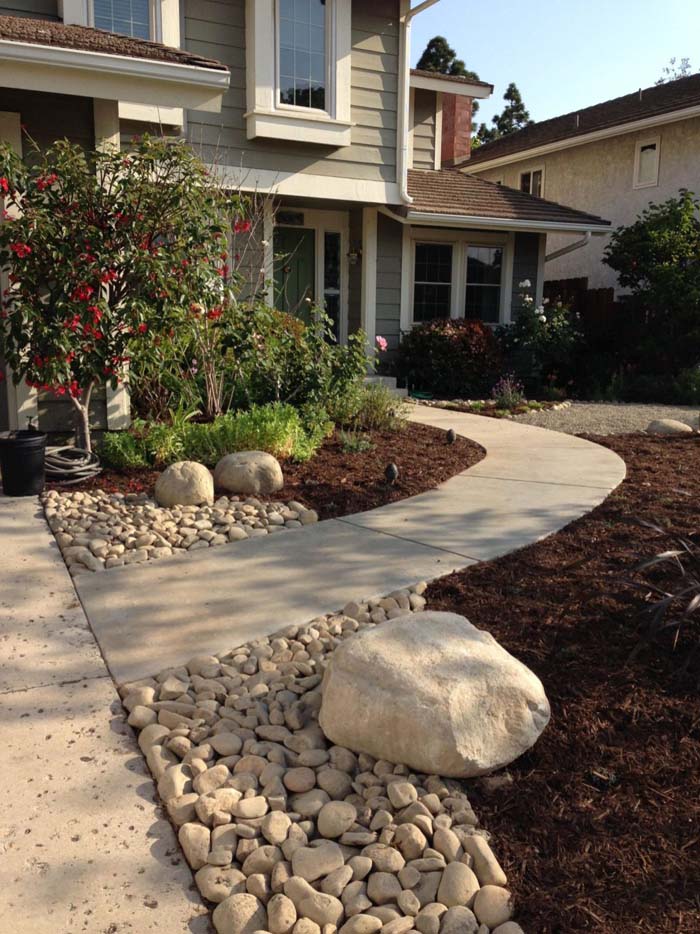
The white rocks in this yard provide a natural boundary to the garden areas with mulch. Using larger rocks helps to contain the mulch and keep it off of the driveway.
Many of the rocks along the perimeter are set below the cement drop-off. This keeps the rocks from being pushed into the driveway.
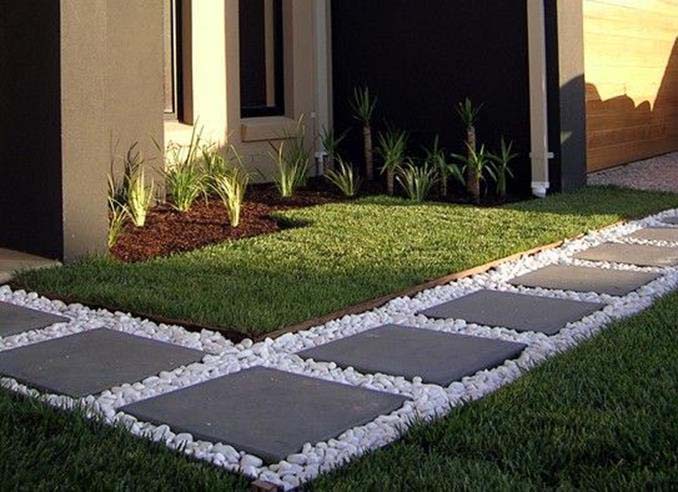
White rocks can create a canvas of any shape and size.
Slate pavers stand out as they float on top of the white marble chips that form the base of this walkway.
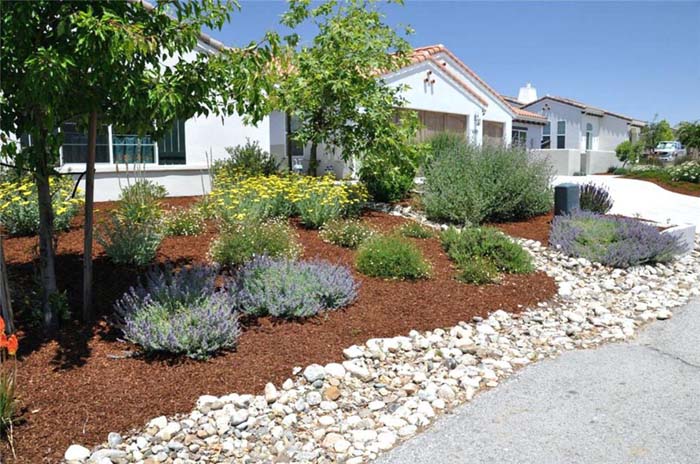
Putting rocks at the bottom of a sloped yard helps contain dirt and mulch from the garden from falling onto the sidewalk.
The sage bushes add color and also help prevent erosion.
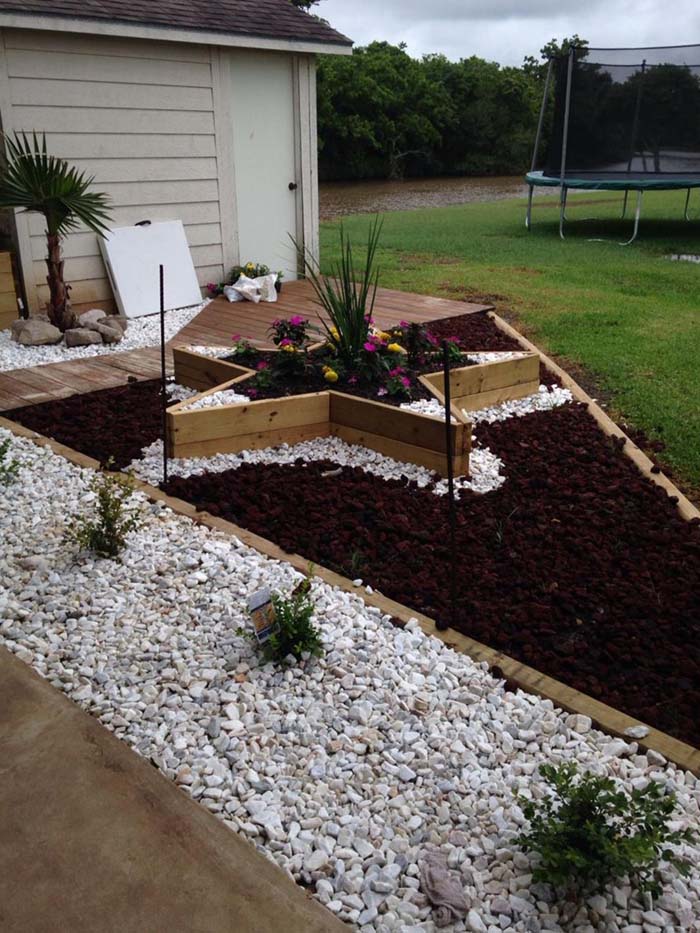
White rocks are used along the walkway and to define the star-shaped raised garden bed.
The homeowners have several options open for finishing the triangle. They can add more plants, pavers, or more rocks.
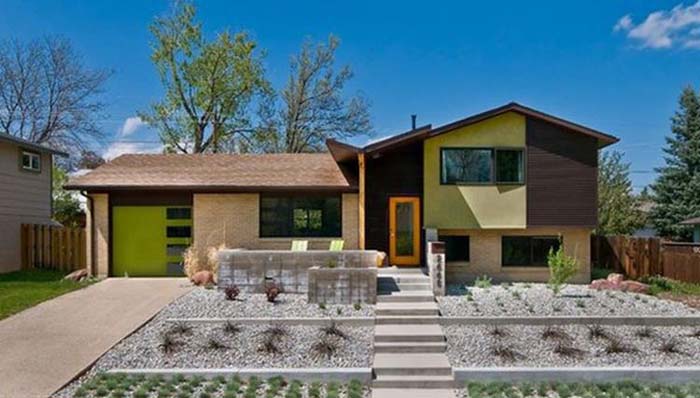
This front yard is an example of a xeriscape. Succulents are placed in three tiers. They’ll thrive in an arid climate.
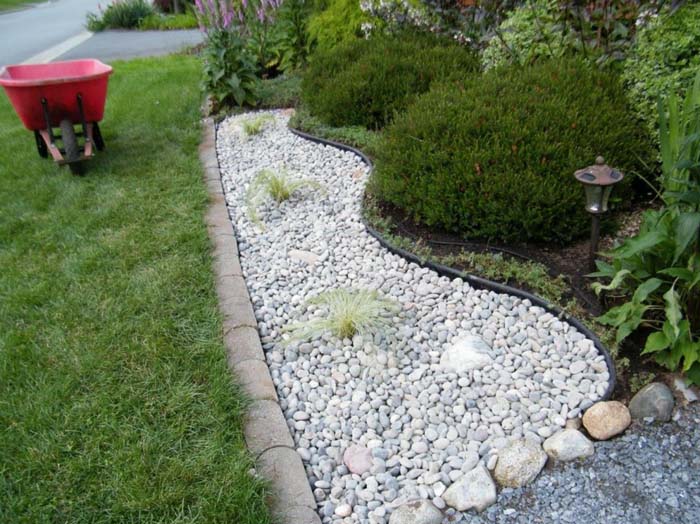
White rocks create a small rock garden that separates the shrubs and hedges from the lawn. Dividing the area with brick pavers streamlines the grassy areas.
There’s no need to weave a hand-push lawn mower in and around the bushes, saving time. It only takes three plants to add interest to the white gravel.
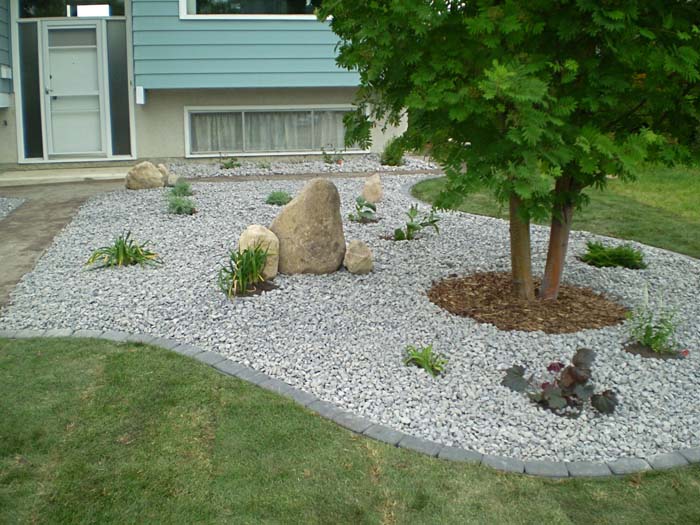
Many people use marble chips to extend the garden away from a bushy area. It can also be used to add interest to a front lawn. Gray bricks create the area. White rocks were added and small plants and large boulders were added to break up the space.
Not only do rock gardens add interest, they lower the maintenance costs of lawn care and lower your water bill.

This front yard idea involves using a spilled terracotta pot white rocks and small flowers. This creates a charming and unique landscaping feature that adds texture and interest to the yard.


